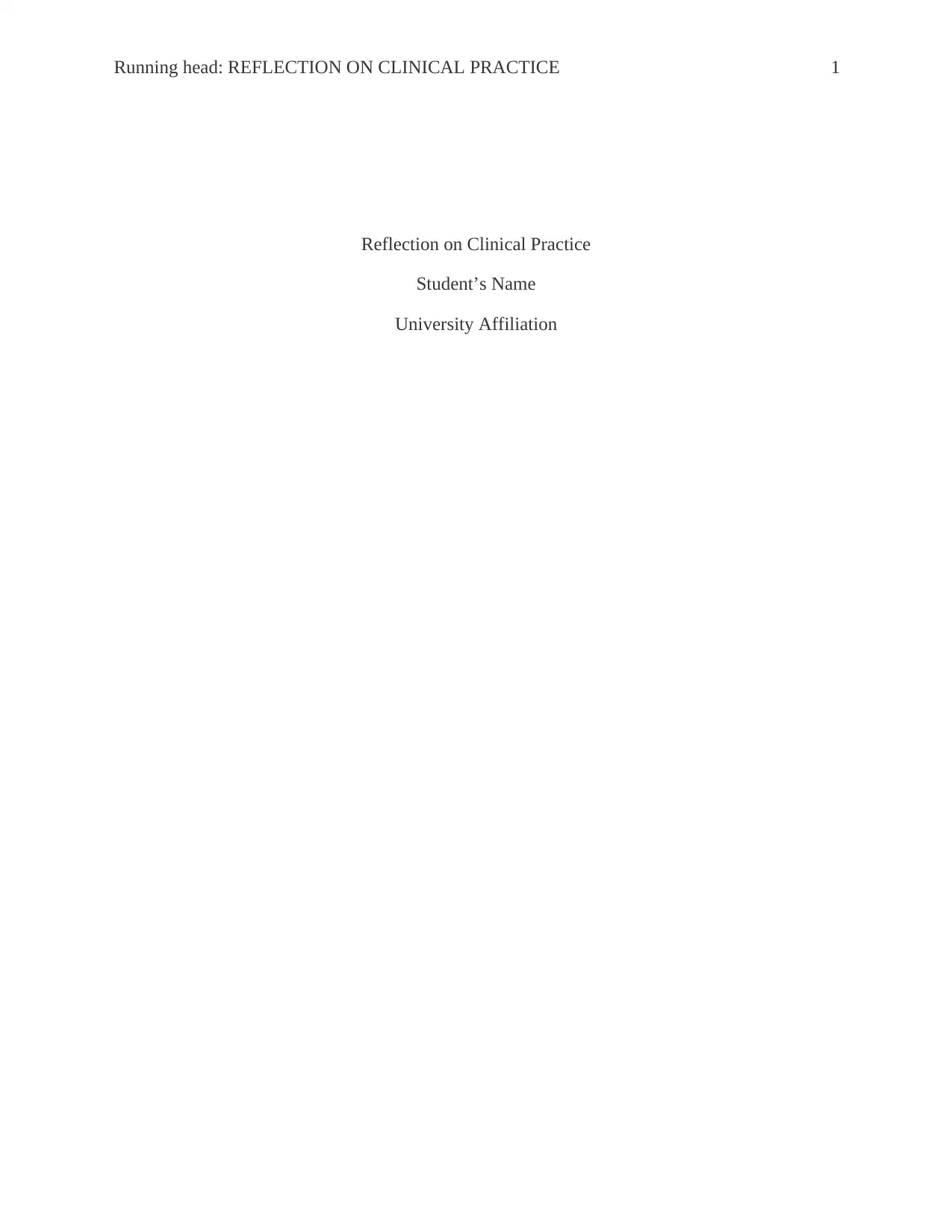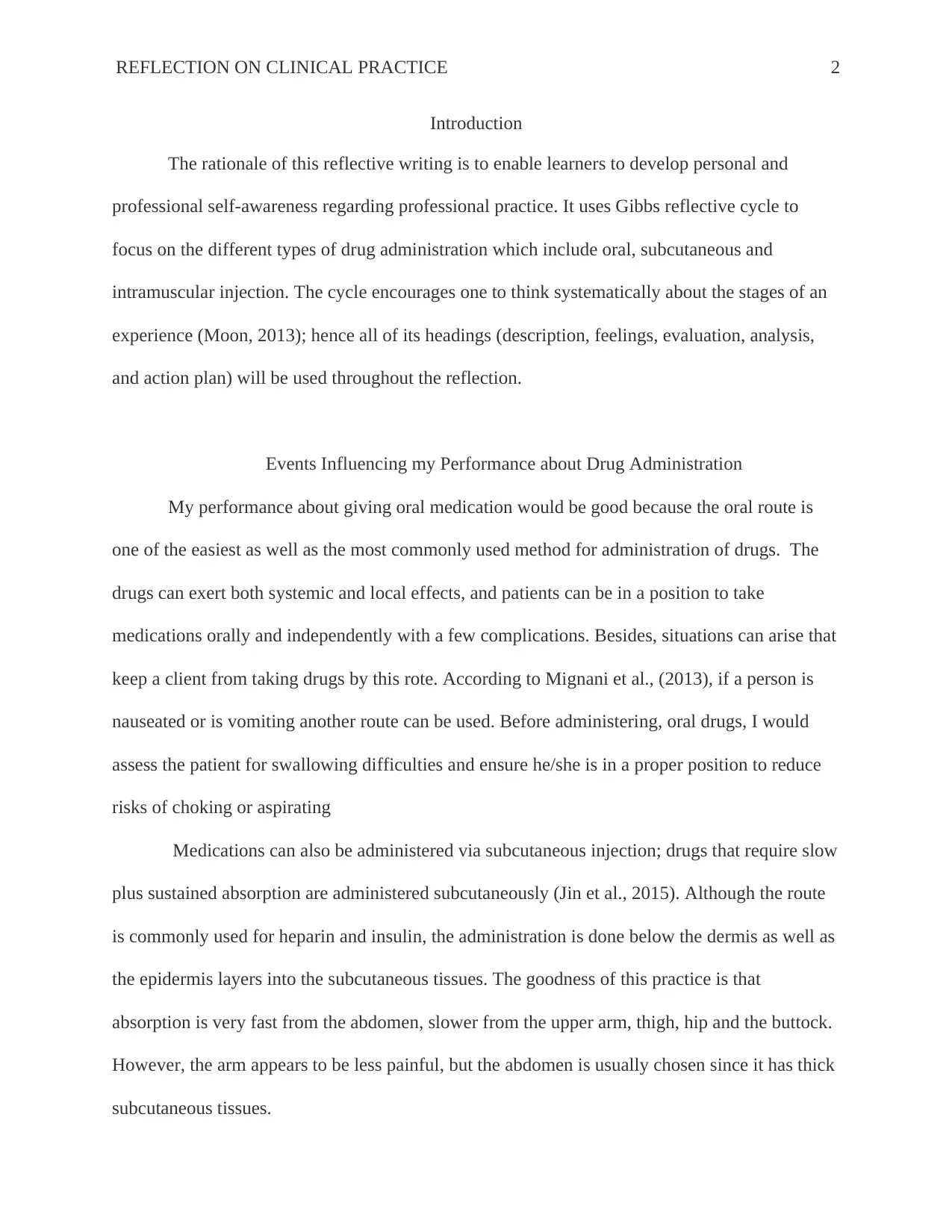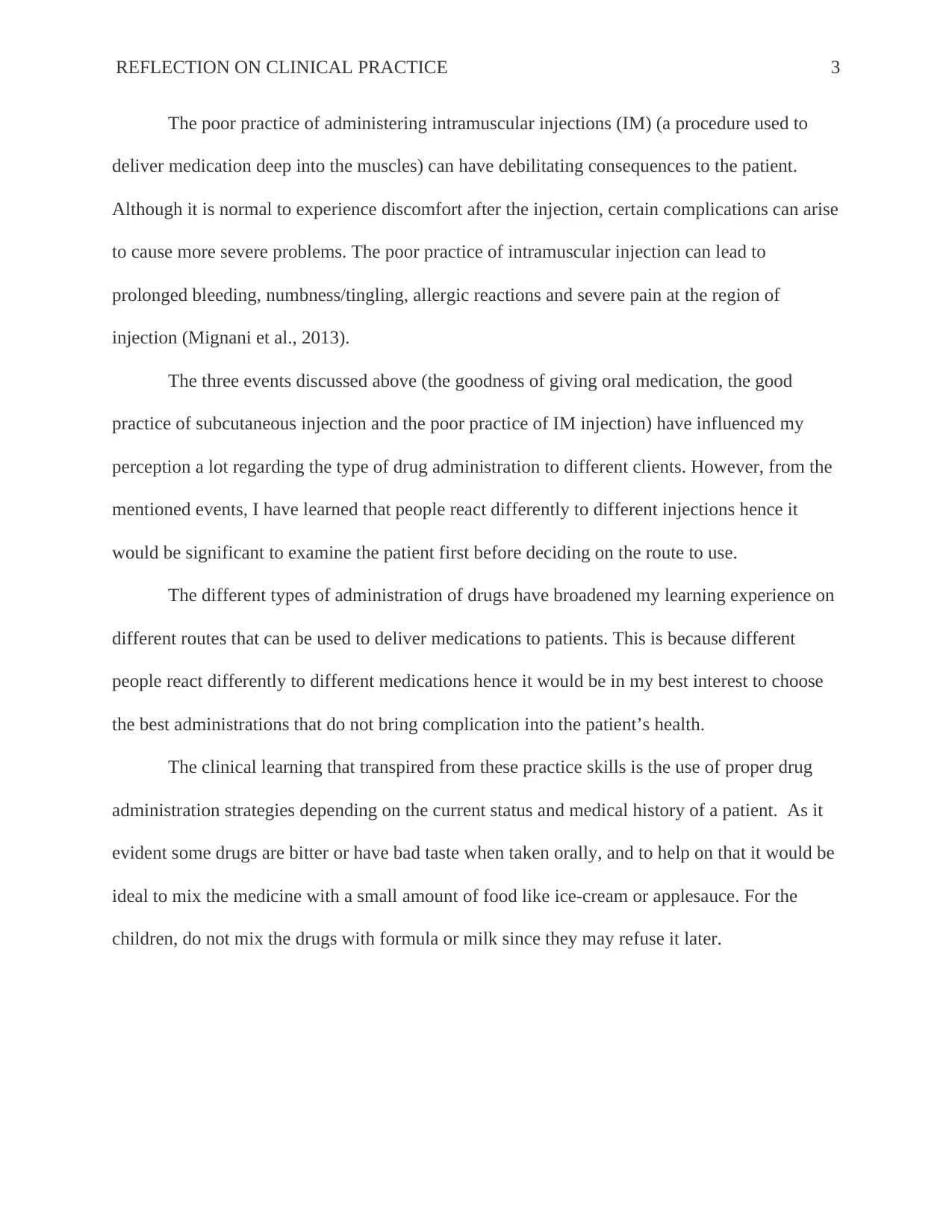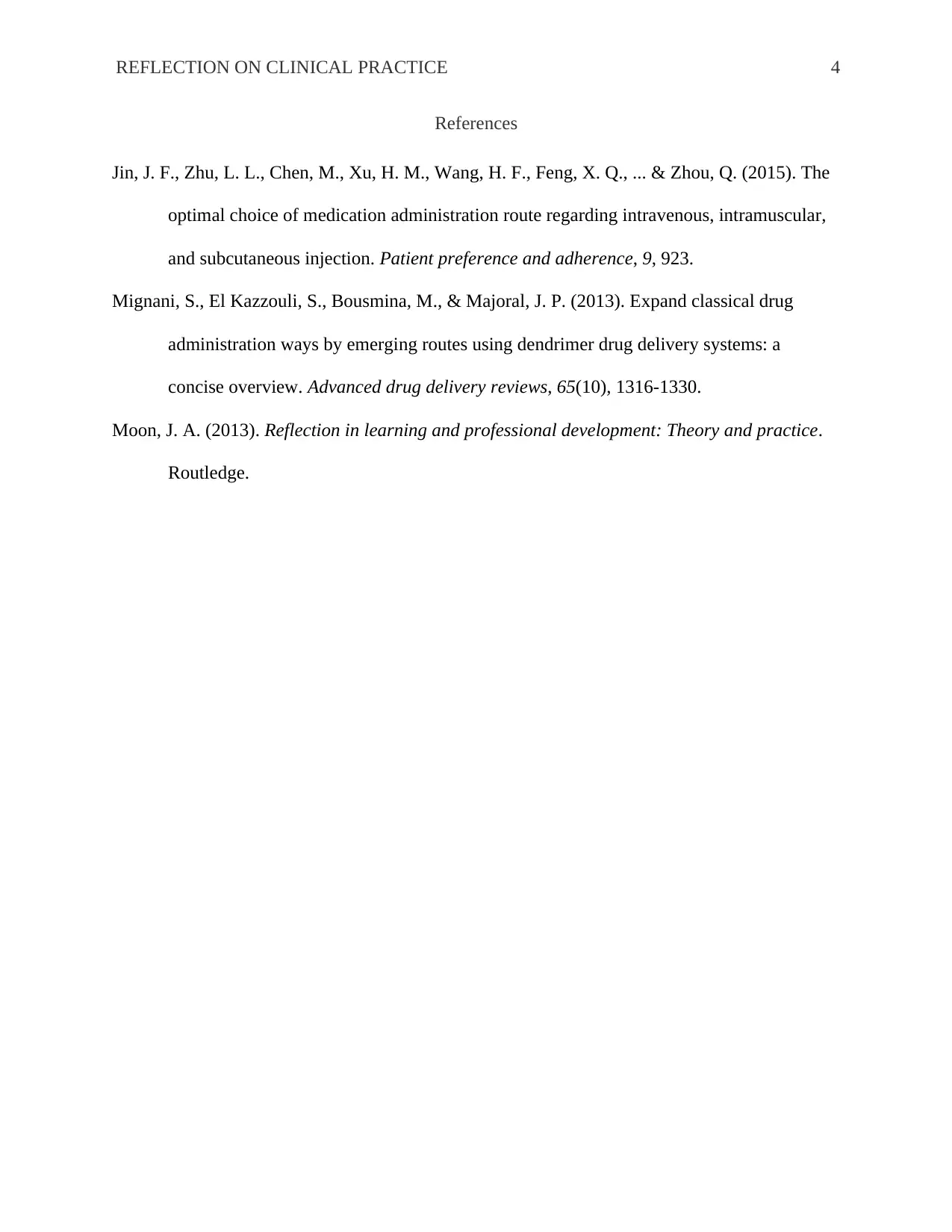University Reflection on Clinical Practice: Drug Administration
VerifiedAdded on 2020/03/16
|4
|802
|290
Journal and Reflective Writing
AI Summary
This reflective writing piece, submitted by a student, delves into the complexities of drug administration within a clinical setting. Utilizing Gibbs' reflective cycle, the author examines various methods, including oral, subcutaneous, and intramuscular injections. The reflection details personal experiences, analyzing the effectiveness and potential complications associated with each administration route. It highlights the importance of considering individual patient needs and reactions when selecting the appropriate method. The author discusses the benefits of oral medication, the practices of subcutaneous injections, and the potential pitfalls of intramuscular injections. Furthermore, the reflection considers the influence of these experiences on the student's perception and understanding of patient care, emphasizing the need for proper strategies and techniques based on patient status and medical history. The student's insights provide a valuable learning experience on proper drug administration strategies.
1 out of 4











![[object Object]](/_next/static/media/star-bottom.7253800d.svg)